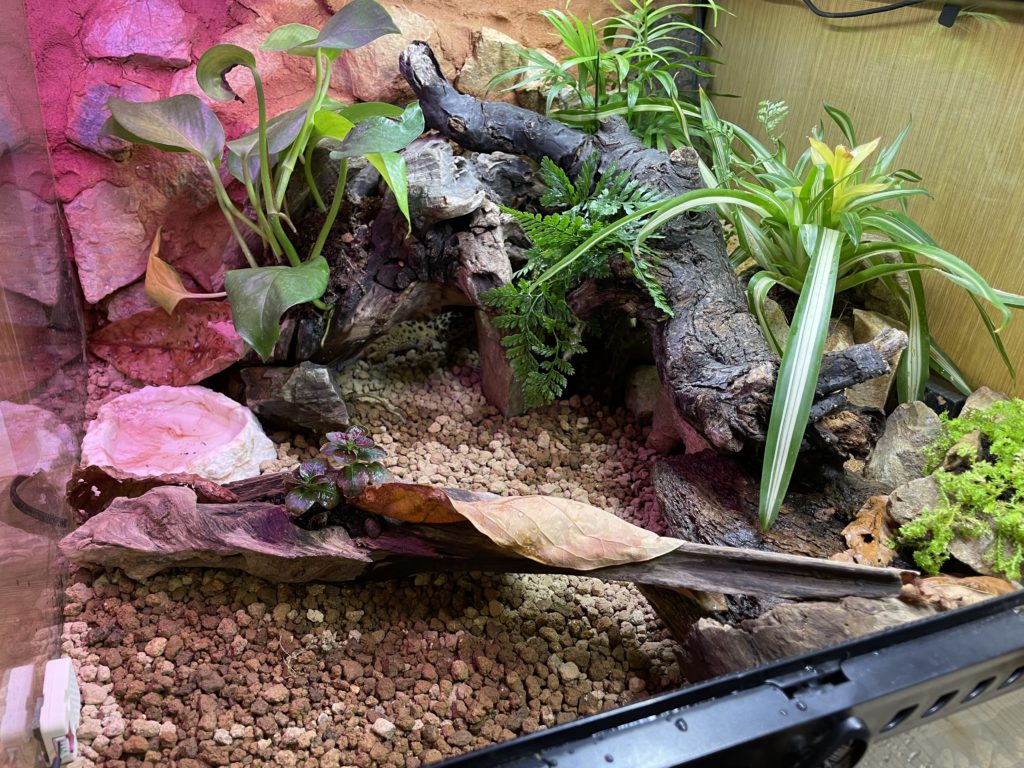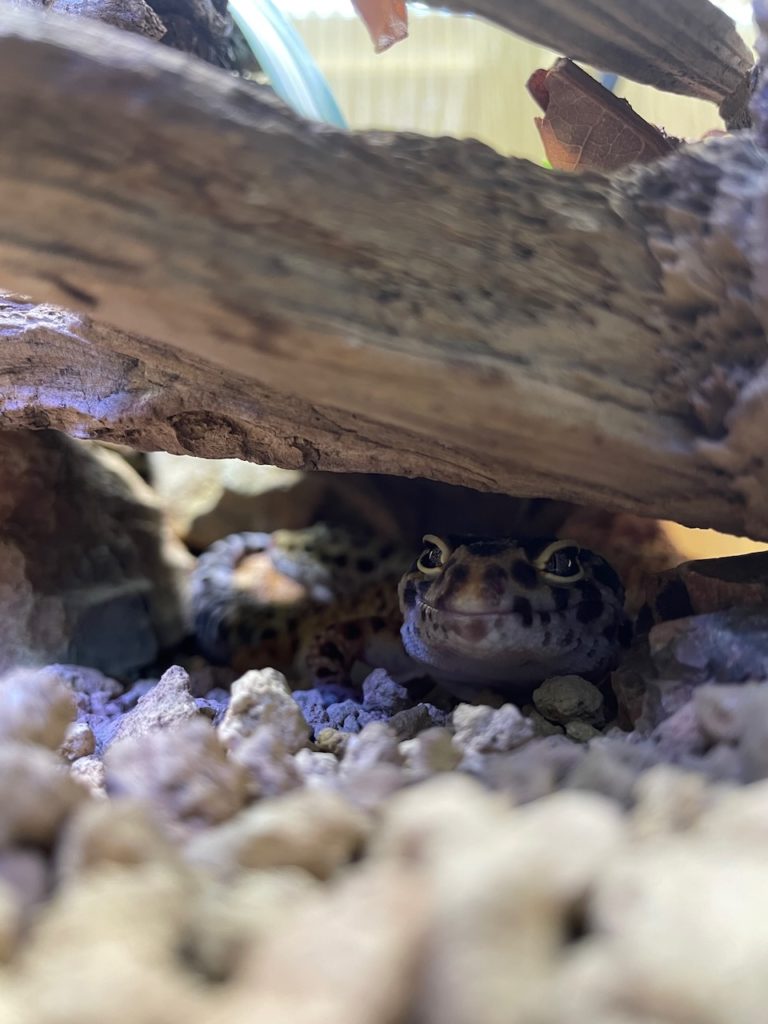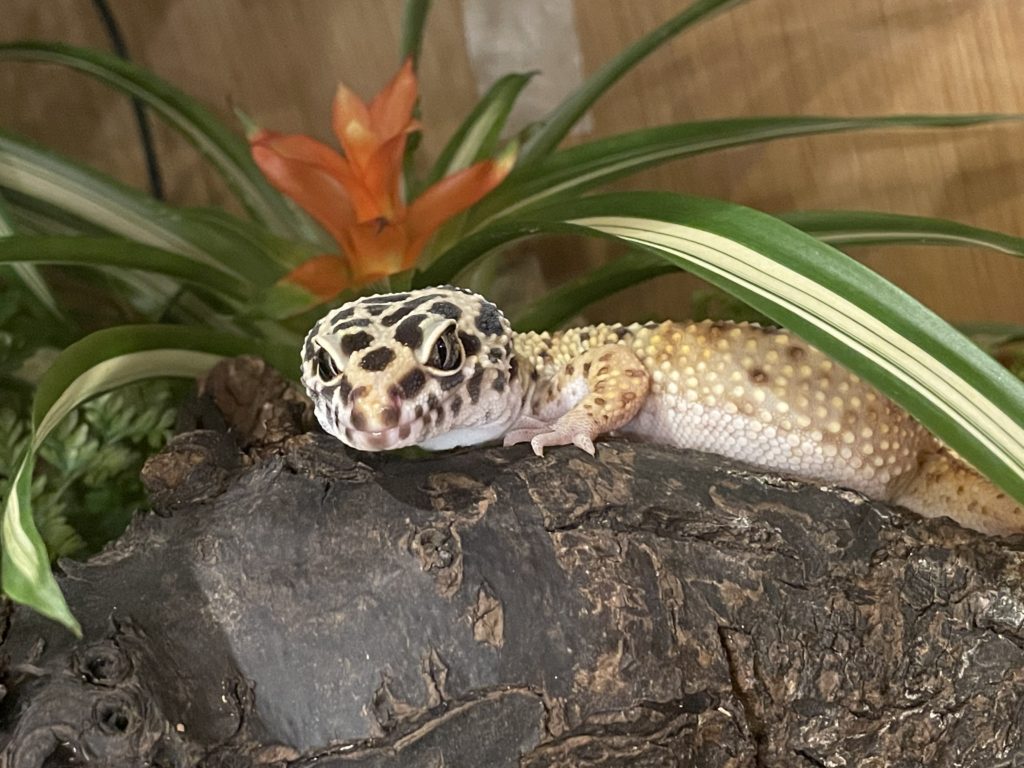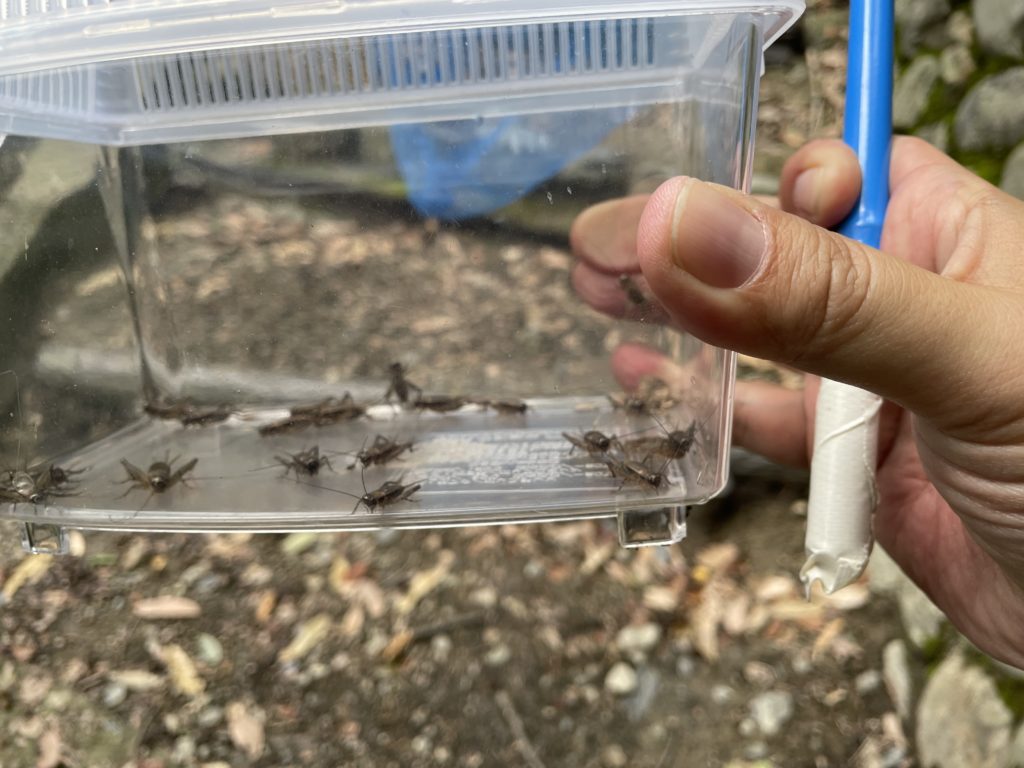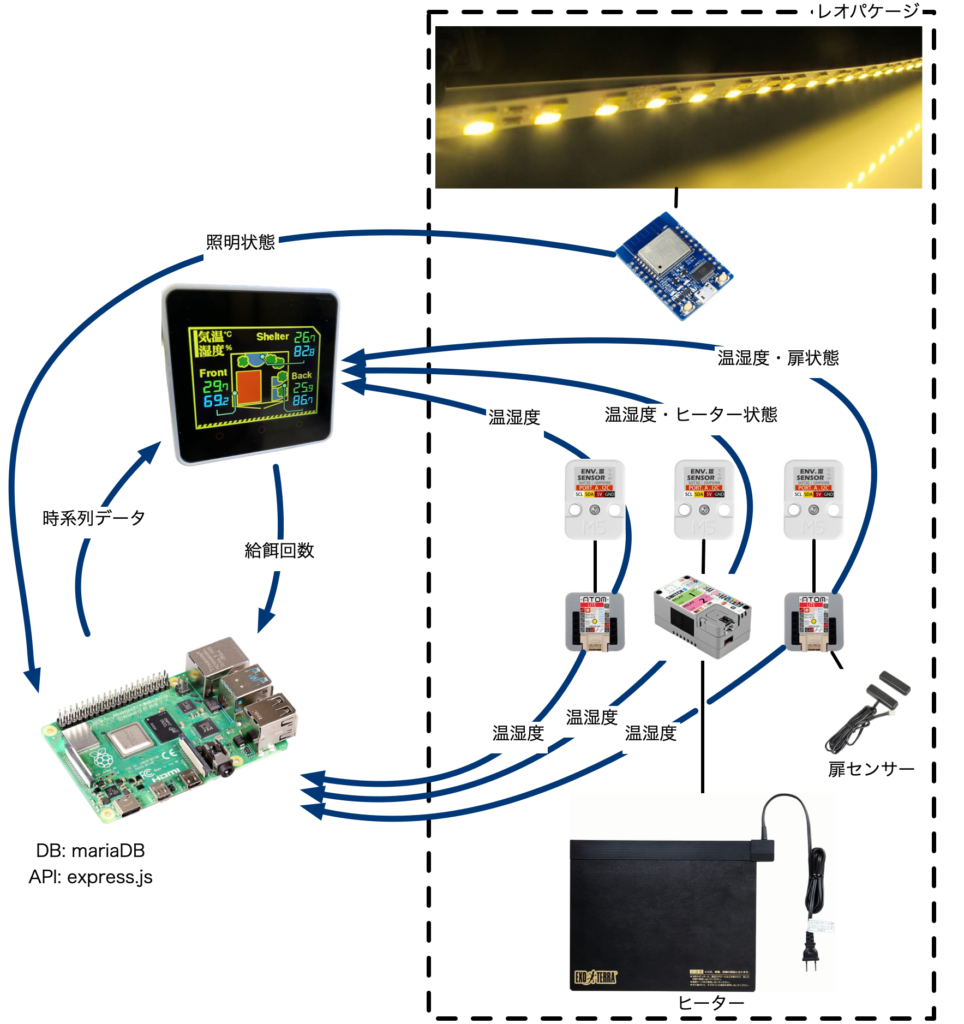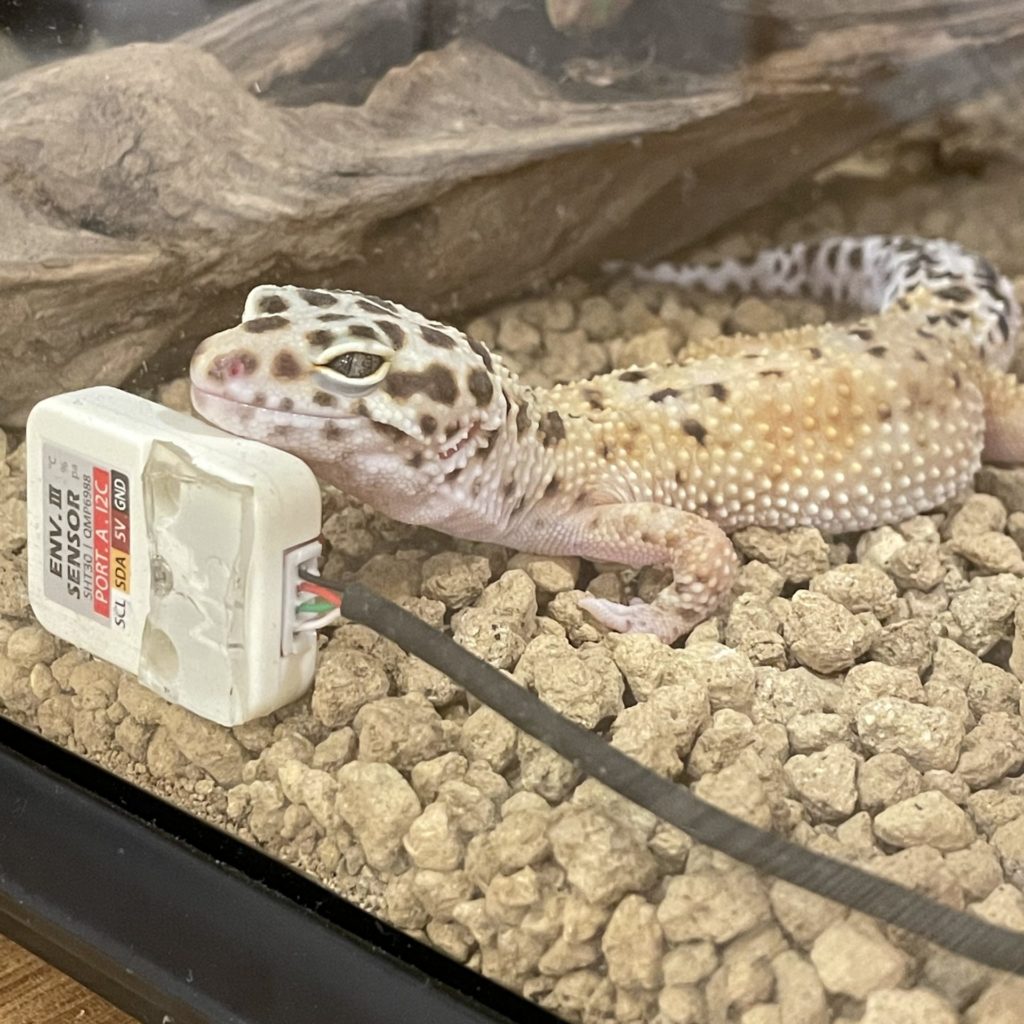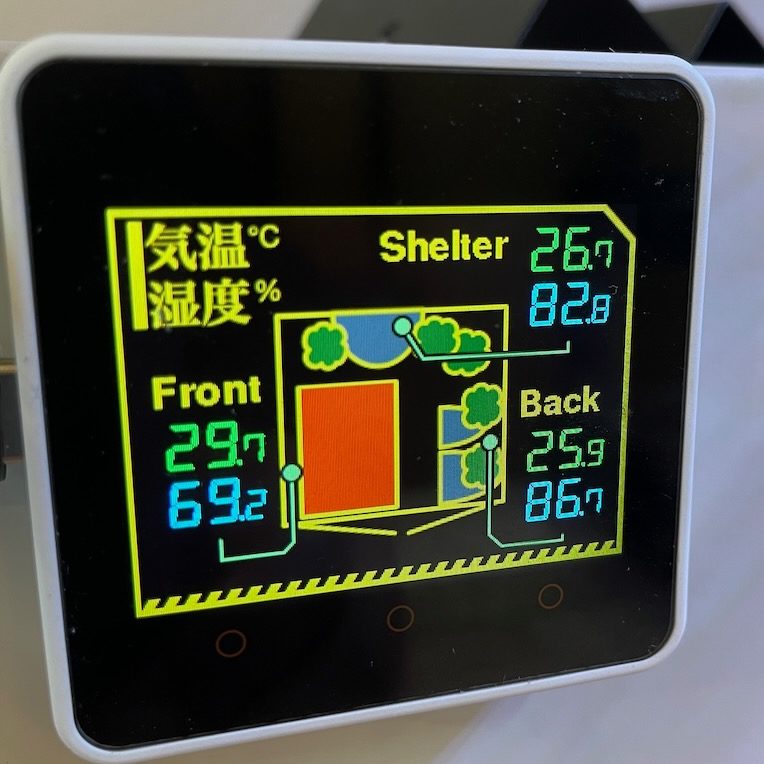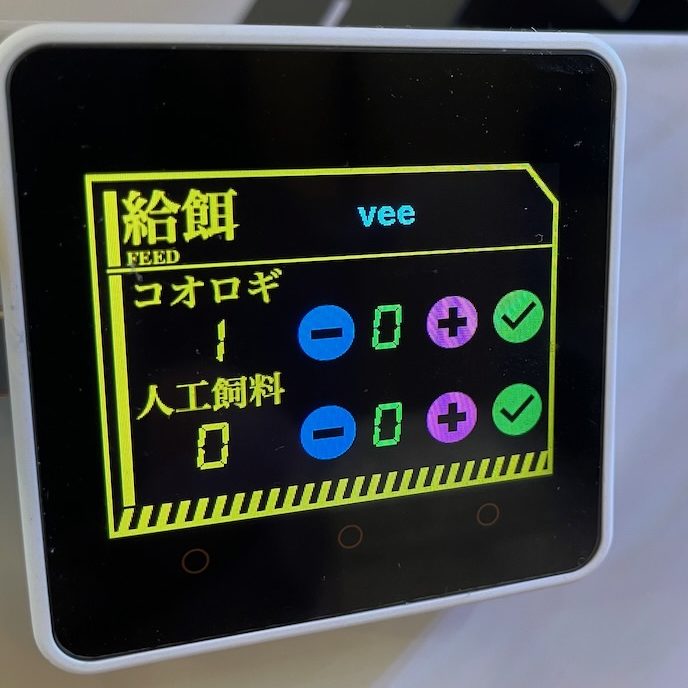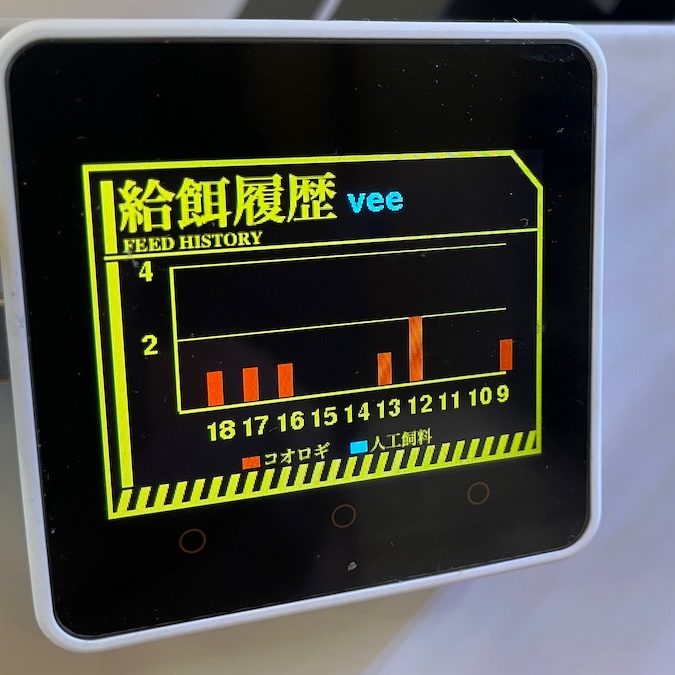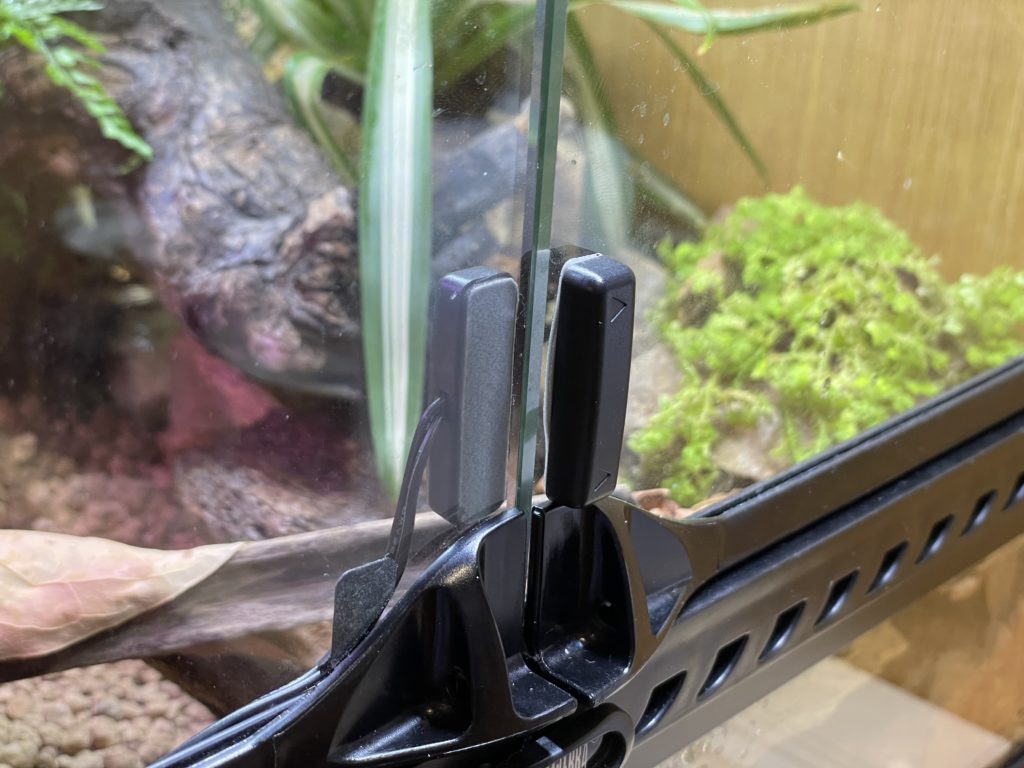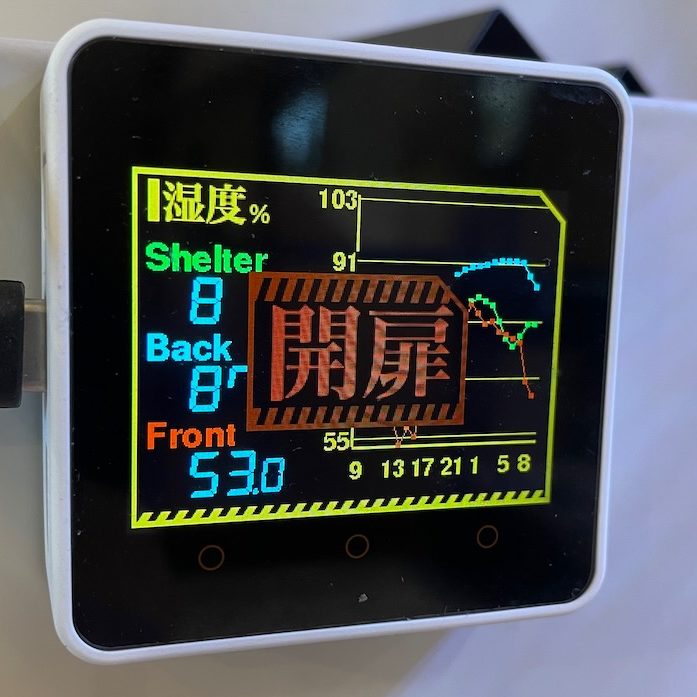Hi, Aqua-tan Studio guys, this is omzn.
This article is the second day of the Aqua-tan Studio Advent Calendar 2022.
In 2022, I started keeping three leopard geckos at home.
It is widely known that Aqua-tan is an incarnation of a newt and hates geckos, but the leopard gecko is a member of the gecko family. Will Aqua-tan eventually reach a point of reconciliation?
Today, I would like to discuss the fascination of the leopard gecko. The Leopard Lizard is a reptile that has evolved to be very suitable for pets.
Breeding environment
The reptile cage is prepared with a red clay and a shelter for each gecko. To maintain humidity a water container is provided. A layout with driftwood is made for exercise.
Tolerant of drought
In the wild, they live in the sand and gravel regions of Pakistan and Afghanistan, so they are very tolerant of drought. This is a big advantage when keeping them indoors, where they tend to dry out.
Capable of hoarding
Since they do not live in areas with abundant prey, they eat their fill when they can and store fat in their tails. 餌をやるのを忘れがちでも大丈夫です.
Artificial food is also acceptable.
They eat insects (crickets, etc.), but they are also accustomed to food.
Live food is also OK
It is very relaxing to give them live food such as crickets and watch them eat them with enthusiasm. However, it is a little difficult if they are not tolerant of insects.
Once you start feeding them live food, they will unconsciously look for grasshoppers and crickets when you walk outside. I captured dozens of crickets every time I hiked up a mountain this fall.
Defecation is rational
They defecate almost always in the same place. They produce a large stool at a time without making a mess, so they can be picked up with tweezers and tossed away to finish the cleanup. Furthermore, since they do not urinate in liquid urine, the bottom floor of their cages is less likely to be soiled. They are specialized for dry areas, and they do not want to let liquid urine out of their cages. What about urine? The body discharges uric acid clumps at the same time as stools. Because of this characteristic, there is almost no need to search for poop in the cage. This is a very nice feature for a lazy person.
Incidentally, all three of my dogs use the same shelter as a toilet. Although the shelter was a little small for them to rest in, they seem to be just right for a toilet, and they show good manners by going in from the bottom, pooping, and coming out.
Also, one of the females laid unfertilized eggs in the fall, and she used this as her egg-laying site. Does she use this place for anything that comes out?
Breeding support IoT device
To support breeding, an IoT system using M5Stack is installed around the cage.
Lighting system
The same system is used for Akuatan aquarium management. Lighting is controlled according to time.
Monitor
This system enables temperature/humidity control, feeding frequency control, and door open detection, which are explained below, with a single device of M5Stack Core2. The data stored in the server is retrieved via API and displayed in values and graphs.
Temperature and humidity control
Although the leopard lizard lives in an arid region, it requires a certain level of humidity. In particular, a high humidity level in the hiding place is desirable.
For this reason, temperature and humidity sensors are placed at three locations in the cage and are constantly monitored. The temperature and humidity sensors are M5Unit Env III and ATOM Lite. Currently, the humidity is not automatically added.
In addition, the heater is controlled in conjunction with the temperature. Commercial heaters can also control the temperature, but since I went to the trouble of making my own control, I made it myself.
The ATOM HUB switch kit is used to turn on/off the heaters according to the temperature.
Feeding frequency control
In order to solve the question, “When and how many times did I feed each animal? In order to solve this question, we have created a system to manage the number of times each individual animal has been fed. ( Manual)
A graph of the past 10 days is also available, so you can check how much food the animals have eaten.
Doors open detection
One of the most common causes of escape is leaving the door open when feeding. If the door is not locked properly, the animal will push the door open by itself.
For this reason, the system detects even the slightest door deviation and sounds an alarm if the door is left open for more than a certain period of time.
For the sensor, I use the AMON [3229] Open-Close Interlocking Switch, which is a DIY part for cars. It is a magnetically interlocked open/close switch, so the detection can be fine-tuned by distance.
Warnings are also interrupted as modal alerts in the temperature/humidity graph and the feeding frequency control screen, so that some action must be taken without fail.
The alert sound is reasonably loud, so you will notice it if you are at home.
Inheriting the legacy of the past
In building this system, most of the subsystems were created by modifying some of the existing subsystems created for Akuatan and Home IoT. Making various things and being able to maintain them in a reusable form lowers the hurdle to making something new!
